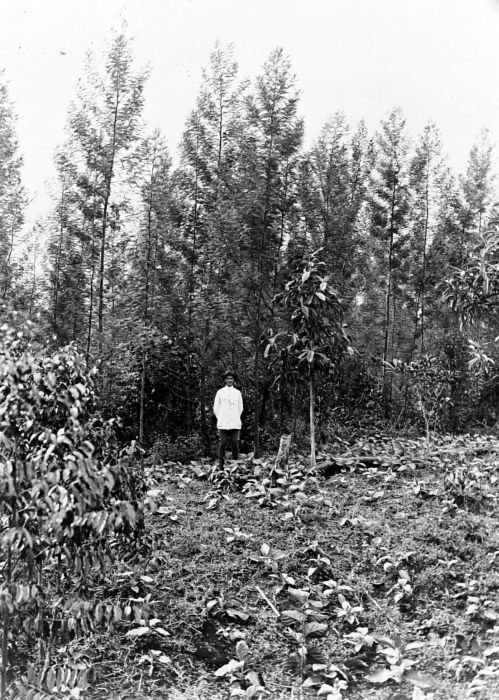
From Pulp & Paper
Part of the discursive programme How On Earth? accompanying the exhibition
Disappearing Legacies: The World as Forest
7.30 pm
Into the Woods: Launch of Harvard Design Magazine #45 with Leah Whitman-Salkin [English]
To go »into the woods« is to enter both nightmare and wonderment, chaos and serenity. The woods are often framed as a nonurban place; an entity separate from, and opposed to, the city – even the world; an eternal refuge that can smoothly be entered and exited, gone into and back out of. But how much of our woods still remains to go into – and on what terms? Of course, wood itself – along with its products like lumber, wood pulp, silvichemicals, and charcoal—fuel the building industry and feed architecture. In a period of accelerated climate change, the planet’s woods are disappearing, burning up, threatening and threatened by human existence. How can we holistically address the woods and its ecosystems, and the life and life-giving power they contain? This issue of Harvard Design Magazine treks into the woods to come to terms with its precarious status as habitat and resource, and to challenge assumptions about wood as material. We won’t be »out of the woods« any time soon, even if the woods as we once knew it, and might still imagine it, has ceased to exist. At the intersection of wilderness, urbanization, and myth, »Into the Woods« embraces contradiction, challenges destruction, and revisits our roots, biological and architectural alike.
8.15 pmThe publication Phenotypes/Limited Forms functions as an extension of the interactive installation Phenotypes/Limited Forms, which encouraged visitors to make a personal selection out of several hundred images by the photographer Armin Linke. In a form of poetic transfer, the visitors arranged the images and named their sequences. Yet, while myriad combinations are possible, the created sequences reveal limited and specific permutations. Virtually every form is possible, but the forces at play limit them to a set of possibilities, to a particular choice of formal expression. The book takes up this aspect and analyzes the nearly 30,000 sequences selected by the public using algorithmic technologies. It offers insights into mechanisms that occur at every instance while moving in our digital present and asks how algorithms are constructed and influence our way of interacting with images.
9 pm
Exhibiting Matters: Launch of GAM Architecture Magazine #14 with Milica Tomić and Dubravka Sekulić [English]
How On Earth?
Many inherited images of nature are no longer adequate considering a reality of species mass extinction, anthropogenic climate change, and deforestation. Have current forms of land use transformation, ecological disturbance, and species extermination created a new, troubled natural history? The discursive programme How On Earth? addresses this and other questions in the context of nature, colonialism, and ecological care in the Anthropocene through a series of discussions, guided tours, lectures, and screenings.
The exhibition and research project Disappearing Legacies: The World as Forest aims to realize the multiplicative potential of art, media, and natural history which, when provocatively exhibited together, solicit transformative engagements with this fragile planet and its perilous forests.
Programme
Free admission
For events taking place during the Long Night of Museums (August 25, 6 pm - 2 am) a valid ticket for the Long Night is required.
Project homepage: www.reassemblingnature.org
Disappearing Legacies: The World as Forest is a three-part project by Anna-Sophie Springer and Etienne Turpin. The travelling exhibition is realized by Centrum für Naturkunde at the Universität Hamburg, where it was on in the fall of 2017. In 2018, adapted iterations are presented from April 27 until August 26, 2018 at the project partner, Tieranatomisches Theater at the Humboldt-Universität zu Berlin, and from October 19 until December 14, 2018 at the Zentralmagazin Naturwissenschaftlicher Sammlungen of the Martin-Luther-Universität Halle-Wittenberg in Halle/Saale. The exhibition cycle is a cooperation with the Schering Stiftung and the Goethe Institut. The project is funded by the German Federal Cultural Foundation.
Gefördert durch

Kulturstiftung des Bundes

Goethe Institut

Schering Stiftung

Centrum für Naturkunde

Universität Hamburg

Martin-Luther-Universität Halle-Wittenberg

